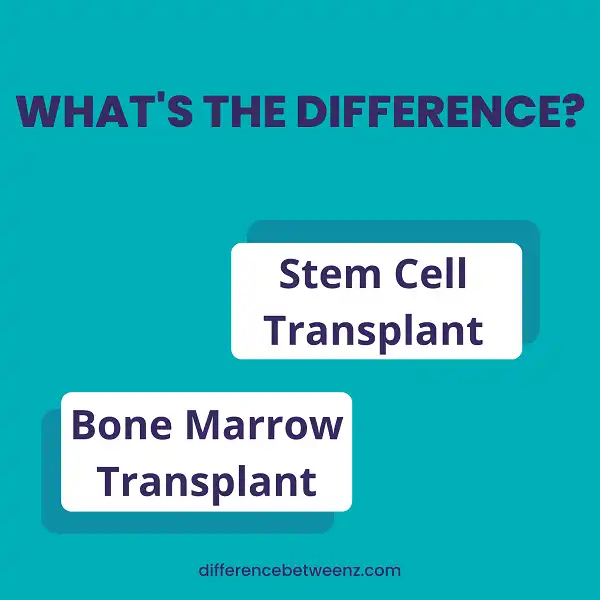When most people think of stem cell transplants, they think of bone marrow transplants. But what’s the difference between the two? And why is one more common than the other? In this post, we’ll explore the differences between stem cell transplants and bone marrow transplants, and we’ll take a look at which one is better for you. So keep reading to learn more!
What is a Stem Cell Transplant?
A stem cell transplant is a procedure in which a patient’s damaged or diseased cells are replaced with healthy ones. Stem cells are the building blocks of the blood and bone marrow, and they can be found in the bone marrow, peripheral blood, or cord blood. In order to receive a transplant, a patient must first undergo a process called conditioning, in which their existing cells are destroyed with chemotherapy or radiation. Once the patient is in remission, the transplanted stem cells are infused into their body. The new cells will then begin to produce healthy blood and bone marrow. Stem cell transplants can be used to treat a variety of conditions, including leukemia, lymphoma, and multiple sclerosis. Patients who receive a transplant typically have a higher chance of long-term survival than those who do not. However, stem cell transplants can also be associated with a number of risks, such as infection and graft-versus-host disease. As such, it is important for patients to discuss all of their options with their doctor before making a decision.
What is Bone Marrow Transplant?
Bone marrow transplant (BMT) is a procedure that replaces damaged or diseased bone marrow with healthy bone marrow stem cells. Bone marrow is the spongy tissue inside your bones where blood cells are made. Stem cells are immature blood cells that develop into red blood cells, white blood cells, and platelets. BMT is used to treat a variety of disorders, including leukemia, lymphoma, sickle cell anemia, and several inherited metabolic and immune system disorders. It may also be used to treat cancer that has spread to the bone marrow. Bone marrow transplants can be performed using stem cells from your own body (autologous transplant) or from a donor (allogeneic transplant). In some cases, stem cells from a related donor may be used (related allogeneic transplant). In other cases, stem cells from an unrelated donor or cord blood may be used (unrelated allogeneic transplant). The type of transplant you receive will depend on many factors, including your age, health condition, and availability of a suitable donor. BMT is a complex and risky procedure with potential complications, so it’s important to discuss the risks and benefits with your doctor before proceeding.
Difference between Stem Cell Transplant and Bone Marrow Transplant
Though they are often used interchangeably, there is a big difference between a stem cell transplant and a bone marrow transplant. A stem cell transplant uses stem cells that have been removed from the blood or bone marrow of the patient, while a bone marrow transplant uses healthy cells that have been donated by another person. The donated cells may come from the patient’s identical twin, a sibling, or an unrelated donor. In some cases, stem cells can be harvested from cord blood. There are several different types of stem cell transplants, including autologous, allogeneic, and syngeneic transplants. autologous transplants use the patient’s own cells, allogeneic transplants use donated cells from a related donor, and syngeneic transplants use donated cells from an identical twin. Each type of transplant has its own risks and benefits. Stem cell transplants are typically used to treat cancer and blood disorders, while bone marrow transplants are used to treat these conditions as well as immune system disorders and genetic diseases. When making the decision about which type of transplant to undergo, patients should consult with their doctor to determine which procedure is right for them.
Conclusion
Bone marrow transplants are a common way to treat leukemia, lymphoma, and other blood cancers. A bone marrow transplant replaces unhealthy bone marrow with healthy cells from a donor. Stem cell transplants use stem cells instead of bone marrow. Stem cells can come from the donor’s own body or from a donor’s umbilical cord blood. There are several ways to do a stem cell transplant. Which type of transplant you have will depend on what kind of cancer you have, where it is in your body, and how bad it is. If you have questions about which type of transplant is best for you, ask your doctor.


